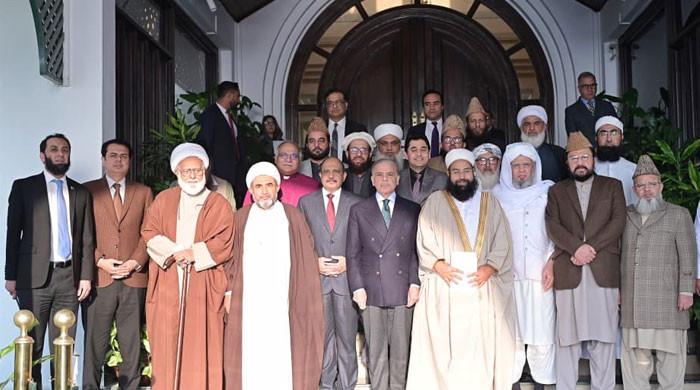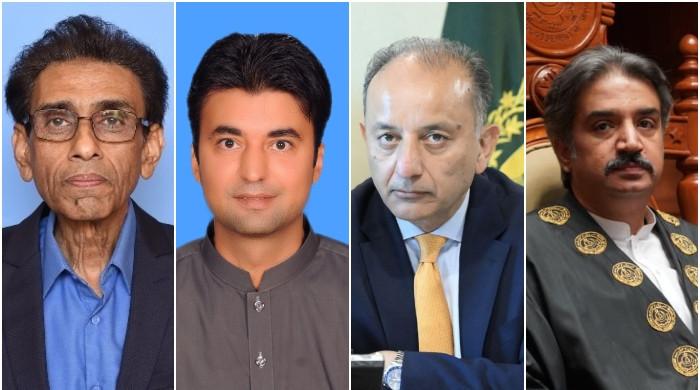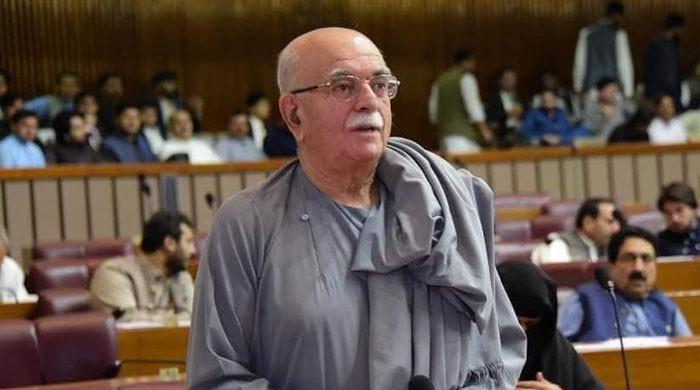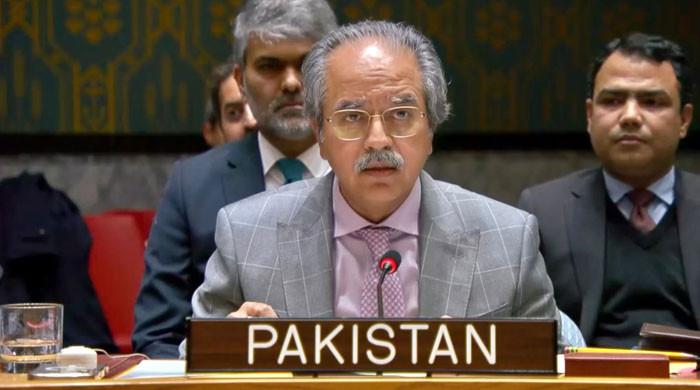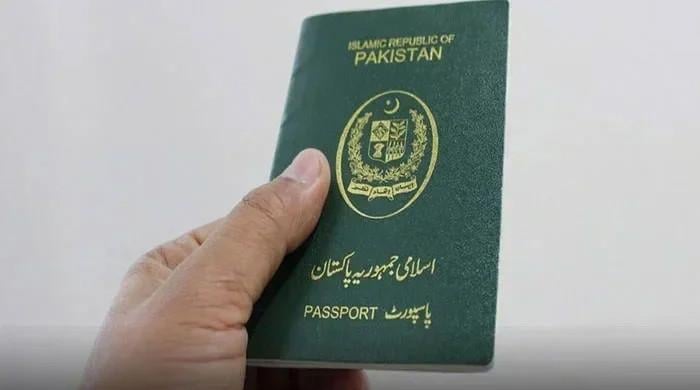'STEAM Muqablo' brings genius schoolchildren on one platform
Students utilise everyday items to create eco-friendly and eco-conscious solutions using STEAM elements
February 18, 2024
The Church Mission School, located in the heart of Karachi’s old city area, was buzzing with genius minds and novel ideas, as they competed to forge sustainable solutions through innovative techniques in a district-level competition organised by STEAM Pakistan — a gender-transformative programme of the Federal Ministry of Education — alongside STEAM Policy Unit, Sindh.
Students from various government schools in Karachi’s District South gathered on Saturday to participate in the 'STEAM Muqablo' utilising the power of science, technology, engineering, art and mathematics to deal with real-world challenges with imagination, creativity and hands-on skills. As Pakistan remains engulfed by escalating environmental concerns and the need to find sustainable ideas to tackle them, the students took it upon themselves to utilise everyday items to create eco-friendly and eco-conscious solutions to address issues such as rising heat and recycling waste materials.
From crafting pretty and sustainable bags to engineering systems for cooling the atmosphere in traditional as well as non-traditional ways, the creations by students did not only offer practical solutions but also heralded a new age of diligent creativity.
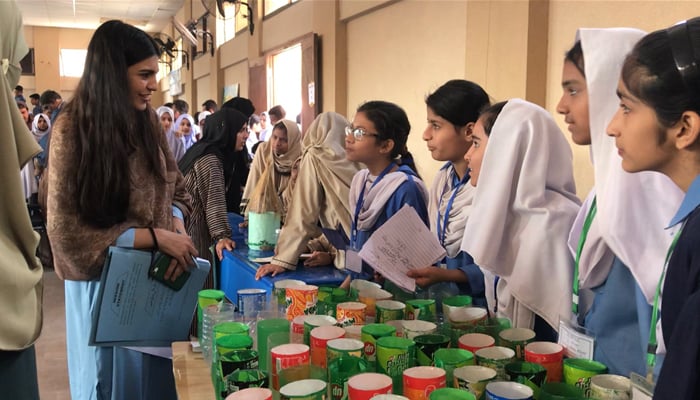
So far, the competition has seen 12,000 students from grades six to eight from 200 government schools across the province participate in the programme. After a competitive school round, the battlefield of finding creative innovations turned to district competitions in cities including Sukkur, Hyderabad, Shaheed Benazirabad and more, with now Karachi going into the last leg of the district round.
The competition included the following challenges for students to come up with innovative solutions to deal with present-day climate-related challenges.
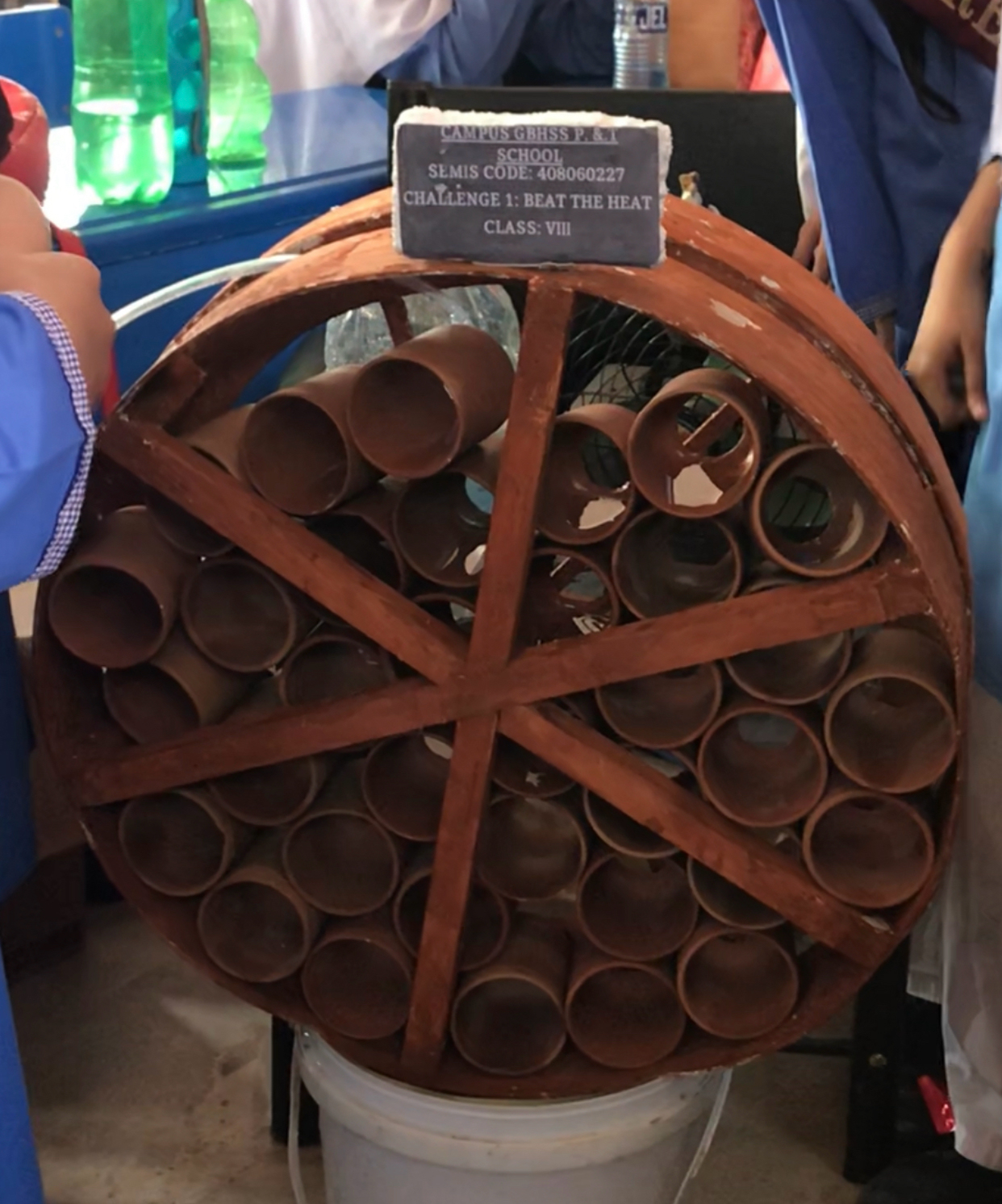
Beat the Heat Challenge: Students create a cooling method or device using cheap, reused, locally sourced materials for the upcoming summer months.
Build a Bag Challenge: Students engineer a strong and sturdy bag or other carrier using cheap, reused locally sourced materials to carry their heaviest textbook.
Postcard Design Challenge: Students design a postcard of their hometown featuring the elements of it they find special.
Design a STEAM game: Teachers create a fun game for their students to enjoy learning STEAM concepts from the curriculum.
A group of female students from the sixth standard built a bag using a flour terming it a “waste material”.
“Then we decorated the bag with wrappers of chips and sewed it. This bag can to carry all our necessary things,” said Maham who was briefing judges about their innovatively designed bag.
While Maham decorated the bag with wrappers, her fellow group member Hira Fatima spent half an hour stitching the bag, while Iraj Imran and Zahra Ashiq worked together to cut the sack and stuck tiny balls from thermapole sheet on it to beautify it.
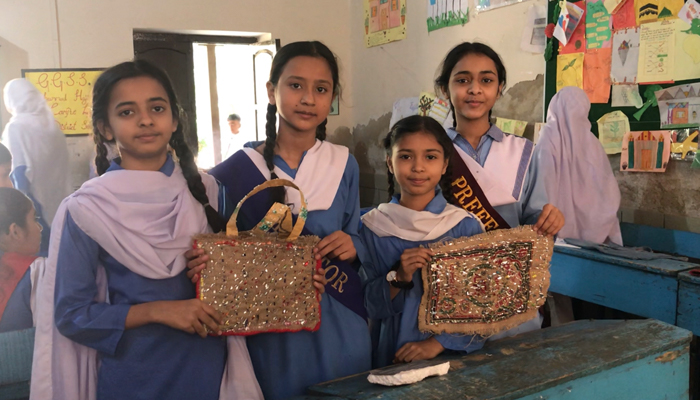
A group of boys from the Church Mission School created a portable cooling device using two tiny, ready-made fan wings and 1.5hz DC motor.
“We also tried using plastic bottles to make the wings of the fan, but it was not generating enough cool air, so we opted for these wings that cost us Rs30 to get better cooling. Overall, the device cost Rs400,” said the boys who study in the eighth grade.
Another group of girls from the SMB Fatima Jinnah Government Girls School made a window-sized, zero-cost eco-cooler applying all five STEAM techniques. The cooling solution, made using cardboard and plastic bottles, was built to work better in a warm, desert-like area where there are no plants or trees to ensure a cool environment, the girls said.
An innovative group from the Government Girls Secondary School Shireen Jinnah Colony made a fan using waste material including a bucket, pipe, plastic beads and a ready-made fan. The cost of the product was Rs300.
“We really enjoyed making the cooling solution,” the girls said, sharing their excitement of participating in the contest.
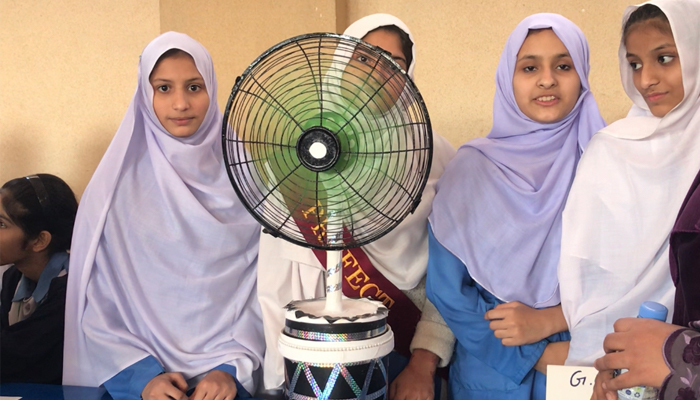
Their teacher, Maliha, said the girls had a great experience building the solution and learnt a lot through it.
“They had a lot of different concepts in their mind. Students learn how electric devices work by reading books, but they don’t usually get the chance to practically apply that knowledge,” she said, highlighting that the project gave them the opportunity to learn and benefit from the concepts learned.
Briefing Geo.tv about the competition, STEAM Pakistan Partnerships Head Sana Kazmi said it was designed differently from the typical science competitions to allow students to explore varying concepts to create their solutions.
“We wanted to give them interdisciplinary challenges where they are solving real world problems, so that their learning is made a little practical,” she said, adding that the idea was to make the competition interdisciplinary —a concept of STEAM — where students use science but also design, math, art and other components together.
Kazmi added that another principle of STEAM was that the students had to work in groups for collaborative problem-solving.
“There is collaboration between different subjects but also between children, so it’s not an individual effort. The students have to tell the judges what each of them have done and then points are given accordingly,” she maintained.
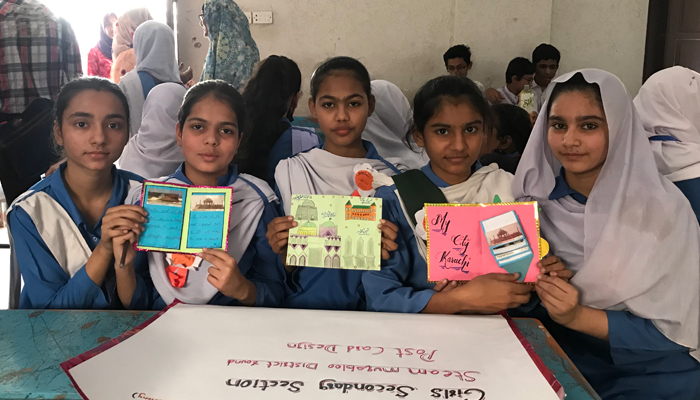
Kazmi — who is also one of the leads at the STEAM Policy Unit in Sindh — also pointed out the extraordinary interest and participation of female students in the competitions.
“Across all of these competitions, 78% of the participating students were girls,” she said, also highlighting how there is an equal need for boys to also be creative.
“It’s always so heartwarming to see that a boy has sewn a bag.”
Imtiaz Bhugio, the event’s chief guest and district education officer South, appreciated the STEAM team’s efforts, particularly the STEAM policy unit, handled by the School Education and Literacy Department. Talking with Geo.tv, he also lauded the work done by students presenting extraordinary solutions to the challenges they were given, while also interacting with one another.
“It is a fair where students are observing each other’s work as well as learning and discovering new ideas. I would recommend conducting such programmes on a quarterly level so that our children come forward into the field of science, arts and other subjects,” he said, highlighting such competition’s role in lessening the dropout ratio and lack of attendance from schools.
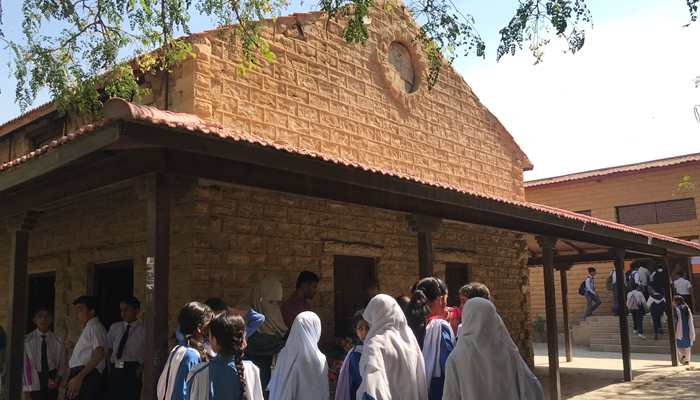
He added: “Such competitions will encourage student to take interest in school and studies.”
Commenting on the remarkable turnout of female students’ participation, Bhugio said girls respond well to such projects. “Even today, there are more girls and STEAM is a great tool to further girls’ education.”
Namrah Khalid, who works for social climatic justice, was a judge at the event who acknowledged the exceptional talent of students participating in the competition.
“The students have made a lot of innovative things and have not necessarily brought difficult concepts through their creations. They have made really simple materials to make their products such as those which are part of our culture like Sindh’s terracotta,” she said, adding that it’s been tough for her to judge amongst the numerous participants.
Additionally, Dr Danish Ali — an assistant professor mathematics at the Institute of Business Administration — was judging the teacher design games built to explain the concepts of science and maths easily to students in an interactive and fun manner.
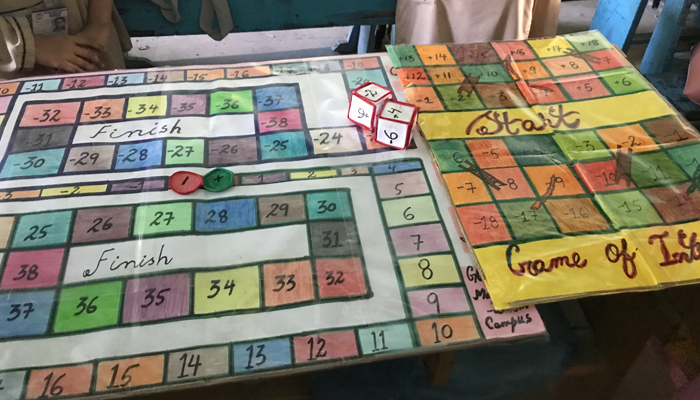
Dr Ali said the teachers have made a good attempt to make different interactive games to engage their students.
“Usually, students find math and science boring as a subject, so these games designed and implemented by teachers in their courses will make the subjects fun for the students and they will be able to grasp the concepts in a much better way.”




